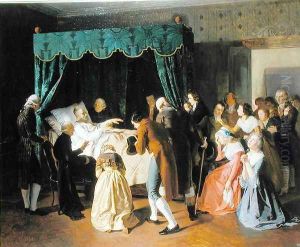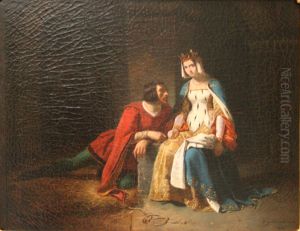Frederic Peyson Paintings
Frédéric Peyson was a French painter born on October 26, 1805, in Montpellier, France. He was known primarily for his genre paintings and landscapes. During the 19th century, Peyson established himself within the French art world, although today he might not be as widely recognized as some of his contemporaries.
Peyson received his initial training in art at the École des Beaux-Arts in Montpellier before moving to Paris to further his studies. It was a time when Paris was the epicenter of the art world, and the city offered him exposure to the leading artists and movements of the day. Peyson was influenced by the Romantic movement, which was then prevalent, as well as the Neoclassical style. He developed a penchant for depicting everyday life with a certain romanticized charm, which was typical of genre painting during that period.
Throughout his career, Frédéric Peyson exhibited his works at the Paris Salon, which was the official art exhibition of the Académie des Beaux-Arts in Paris. The Salon was the most significant annual or biennial art event in the Western world at the time. Success at the Salon often meant official recognition and the opportunity to garner commissions.
Peyson's artwork was well-received, and he earned a third-class medal in 1836. His paintings often depicted scenes from rural life, the leisure activities of the bourgeoisie, and occasionally historical themes. Although he was successful in his time, Peyson did not reach the same level of enduring fame as some of his contemporaries, such as Eugène Delacroix or Jean-Auguste-Dominique Ingres.
Frédéric Peyson's contributions to French art were recognized in his later years, and he was decorated with the Legion of Honour, France's highest order of merit for military and civil merits, in 1864. He continued to paint and contribute to the art community until his death on June 6, 1887, in Montpellier. His works remain part of the collections of various museums and galleries, appreciated by those who study 19th-century French genre painting.

